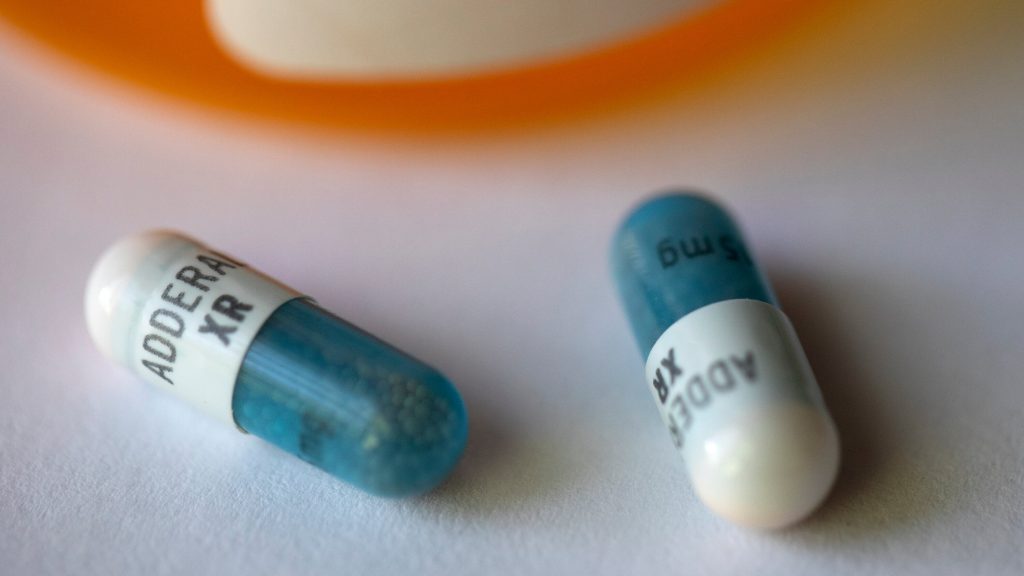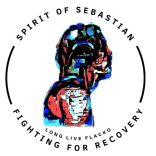PRESCRIPCION DRUG ABUSE.
Recreational use of prescription drugs is
a serious problem with teens and young adults. National studies show that a teen is more likely to have abused a prescription drug than an illegal street drug.
Many teens think prescription drugs are safe because they were prescribed by a doctor.
But taking them for non-medical use to get high or “self-medicate” can be just as dangerous and addictive as taking illegal street drugs.
There are very serious health risks in taking prescription drugs. This is why they are taken only under the care of a doctor. And even then, they have to be closely monitored to avoid addiction or other problems.
Many pills look the same. It is extremely dangerous to take any pill that you are uncertain about or was not prescribed for you. People can also have different reactions to drugs due to the differences in each person’s body chemistry. A drug that was okay for one person could be very risky, even fatal, for someone else.
Prescription drugs are only safe for the individuals who actually have the prescriptions for them and no one else.

Prescription Drugs: What you don’t know
Due to their potential for abuse and addiction, many prescription drugs have been categorized by the US Drug Enforcement Administration in the same category as opium or cocaine.
These include Ritalin and Dexedrine (stimulants), and the painkillers OxyContin, Demerol and Roxanol.
Many illegal street drugs were at one time used or prescribed by doctors or psychiatrists but were later banned when the evidence of their harmful effects could no longer be ignored.
Examples are heroin, cocaine, LSD, methamphetamine and Ecstasy.
Abuse of prescription drugs can be even riskier than the abuse of illegally manufactured drugs. The high potency of some of the synthetic (man-made) drugs available as prescription drugs creates a high overdose risk. This is particularly true of OxyContin and similar painkillers, where overdose deaths more than doubled over a five-year period.
Many people don’t realize that distributing or selling prescription drugs (other than by a doctor) is a form of drug dealing and as illegal as selling heroin or cocaine, with costly fines and jail time. When the drug dealing results in death or serious bodily injury, dealers can face life imprisonment.

TYPES OF ABUSED PRESCRIPTION DRUGS
Prescription drugs that are taken for recreational use
include the following major categories:
1. Depressants: Often referred to as central nervous system (brain and spinal cord) depressants, these drugs slow brain function. They include sedatives (used to make a person calm and drowsy) and tranquilizers (intended to reduce tension or anxiety).
2. Opioids and morphine derivatives: Generally referred to as painkillers, these drugs contain opium or opium-like substances and are used to relieve pain.
3. Stimulants: A class of drugs intended to increase energy and alertness but which also increase blood pressure, heart rate and breathing.
4. Antidepressants: Psychiatric drugs that are supposed to handle depression.
DEPRESSANTS
Sometimes called “downers” these drugs come in multicolored tablets and
capsules or in liquid form. Some drugs in this category, such as Zyprexa, Seroquel and Haldol, are known as “major tranquilizers” or “antipsychotics,” as they are supposed to reduce the symptoms of mental illness. Depressants such as Xanax, Klonopin, Halcion and Librium are often referred to as
“benzos” (short for benzodiazepines*). Other depressants, such as Amytal, Nembutal and Seconal, are classed as barbiturates drugs that are used as sedatives and sleeping pills.

Some of the well-known brand and street names:
Brand Names
• Xanax
• Valium
• Halcion
• Librium
• Ativan
• Klonopin
Street Names
Candy
•Downers
•Sleeping pills
•Tranks
Brand Names
• Amytal
• Nembutal
• Seconal
• Phenobarbital
Street Names
• Barbs
• Reds
• Red Birds
• Phennies
• Tooies
• Yellows
• Yellow Jackets
Depressants: Short-Term effects
• Slow brain function
• Lowered blood pressure
• Confusion
• Dizziness
• Fever
• Visual disturbances
• Disorientation, lack of coordination
• Difficulty or inability to urinate
• Slowed pulse and breathing
• Poor concentration
• Fatigue
• Slurred speech
• Sluggishness
• Dilated pupils
• Depression
• Addiction
Higher doses can cause impairment of memory judgment and coordination, irritability. paranoia, and suicidal thoughts, Some people experience the opposite of the intended effect, such as agitation or aggression.
Using sedatives (drugs used to calm or soothe) and tranquilizers with other substances particularly alcohol, can slow breathing and the heart rate and even lead to death.

Depressants: Long-Term effects
Tolerance to many depressants can develop rapidly, with larger doses needed to achieve the same effect.
The user, trying to reach the same high, may raise the dose to a level that results in coma or death by overdose.
Long-term use of depressants can produce depression, chronic fatigue, breathing difficulties, sexual problems and sleep problems. As a dependency on the drug increases, cravings, anxiety or panic are common if the user is unable to get more.
Withdrawal symptoms include insomnia, weakness and nausea.
For continual and high-dose users, agitation, high body temperature, delirium, hallucinations and convulsions can occur. Unlike withdrawal from most drugs, withdrawal from depressants can be life-threatening.
These drugs can also increase the risk of high blood sugar, diabetes, and weight gain (instances of up to 100 pounds have been reported).

ROHYPNOL
Rohypnol is a tranquilizer about 10 times more potent than
Rivatium. The drug is available as a white or olive-green pill and is usually sold in the manufacturer’s bubble packaging. Users crush the pills and snort the powder, sprinkle it on marijuana and smoke it, dissolve it in a drink or inject it.
BRAND NAME: Rohypnol
STREET NAMES
• forget-me pill
• Mexican Valium
• R2
• Roche
• roofies
• roofinol
• rope
• rophies
ROHYPNOL EFFECTS
Rohypnol has been used to commit sexual assaults because
it renders the victim incapable of resisting, giving it the reputation of a
“date-rape” drug.
Rohypnol users often describe its effects as
“paralyzing.” The effects
start 20 to 30 minutes after taking the drug, peak within 2 hours and may persist for 8 or even 12 hours.
A person can be so incapacitated (made unable to act) they collapse.
They lie on the floor, eyes open, able to observe events but completely unable to move. Afterwards, memory is impaired and they cannot recall any of what happened.
The person experiences loss of muscle control, confusion, drowsiness and amnesia.
Rohypnol is sold in Europe and Latin America as a sleeping pill, but it is illegal in the United States.
OPIOIDS AND MORPHINE DERIVATIVES
Opioids are drugs that act on the nervous system to relieve pain.
Continued use and abuse can lead to physical dependence and withdrawal symptoms. They come in tablets, capsules or liquid.
Some of the well-known brand and street names:
Brand Names
• Fiorional with Codeine,Robitussin A-C
,Tylenol with Codeine
,Empirin with Codeine, Actiq,Duragesic,Sublimaze, OxyContin,Percodan, Percocet, Tylox, Dilaudid, Demerol, Roxanol, Duramorph.
Street Names
Captain Cody, Cody, Schoolboy, Doors & Fours, Pancakes & Syrup, Loads, Tango and Cash, China white, Friend, Jackpot, TNT, Apache, China girl, Dance fever, Goodfella, Murder 8, M, Miss Emma, Monkey, White Stuff, Ox 80, Oxycat, Hillbilly heroin, Percs, Perks, Demmies, Pain killer, Juice, Dillies
Short-term effects of opioids and morphine derivatives include:
• Drowsiness
• Slowed breathing
• Constipation
• Unconsciousness
• Nausea
• Coma

Opiods and Morphine derivatives Long-Term effects.
Continued use or abuse of opioids can result in physical dependence and addiction. The body adapts to the presence of the drug and withdrawal symptoms occur if use is reduced or stopped. These include restlessness, muscle and bone pain, insomnia, diarrhea, vomiting, and cold flashes, with goose bumps (“cold turkey”). Tolerance can also occur, meaning that long-term users must increase their doses to achieve the same high.
Stimulants, sometimes
called “uppers,” temporarily increase alertness and energy. The most commonly used street drugs that fall into this category are cocaine and amphetamines.
Prescription stimulants come in tablets or capsules.
When abused, they are swallowed, injected in liquid form or crushed and snorted.
Some of the well-known brand and street names:Brand Names
Ritalin, Concerta, Biphetamine, Dexedrine
Street Names
R-ball, Skippy, The smart drug, Vitamin R, JIF, Kibbles and bits, Speed, Truck drivers, Bennies, Black beauties, Crosses, Hearts, LA turnaround, Uppers.
STIMULANTS
SHORT-TERM EFFECTS
he short-term effects of stimulants include exhaustion, apathy and depression–the
“down” that follows the “up.” It is this immediate and lasting exhaustion that quickly leads the stimulant user to want the drug again. Soon he is not trying to get “high,” he is only trying to get “well to feel any energy at all.
STIMULANTS
LONG-TERM EFFECTS
Stimulants can be addictive, Repeated high doses of some stimulants over a short period can lead to feelings of hostility or paranoia.
Such doses may also result in dangerously high body temperatures and an irregular heartbeat.

ANTIDEPRESSANTS
ANTIDEPRESSANTS
Another category of prescription drugs that are sometimes abused are antidepressants . These include Prozac, Paxil, alexa, Zoloft, Effexor and Remeron. These come in multicolored capsules and tablets. Studies have shown that the effects of ese drugs can include:
Insomnia
Irritability
Nervousness and anxiety
Violent thoughts and actions
Agitation
Suicidal thoughts or suicide
Tremors
Hostility
Sweating
Irregular heartbeat
Aggression
Criminal behavior
Confusion and incoherent thoughts
Paranoia
•Hallucinations
Psychosis
Akathisia (a painful inner agitation; inability to sit still)

ABUSE OF OVER THE COUNTER DRUGS
Over-the-counter cold and cough medicines containing the drug
Dextromethorphan (DXM) have also been abused. DXM is sold in syrup, gel and tablet form. When sold on the internet as powder, it is particularly risky because of the uncertainty of its composition and dose. It is found in more than 100 products; Coricidin and Robitussin are abused the most.
Brand Names
• Coricidin
• Robitussin
Street Nomes
• DXM
• ССС
• Triple C
• Skittles
• Robo
• Poor Man’s PCP

COUGH SYRUP (DXM) EFFECTS
• Visual
• Physical
hallucinations
dependence (with
• Hyper-excitability
prolonged use)
• Insomnia
• Dizziness
• Lethargy
• Slurred speech
• Delusions
•Sweating
• High blood pressure
• Liver and brain damage
Mixed with other drugs, cough syrup can also cause central nervous system and heart problems.
Combined with alcohol, it is particularly dangerous and can result in death.
